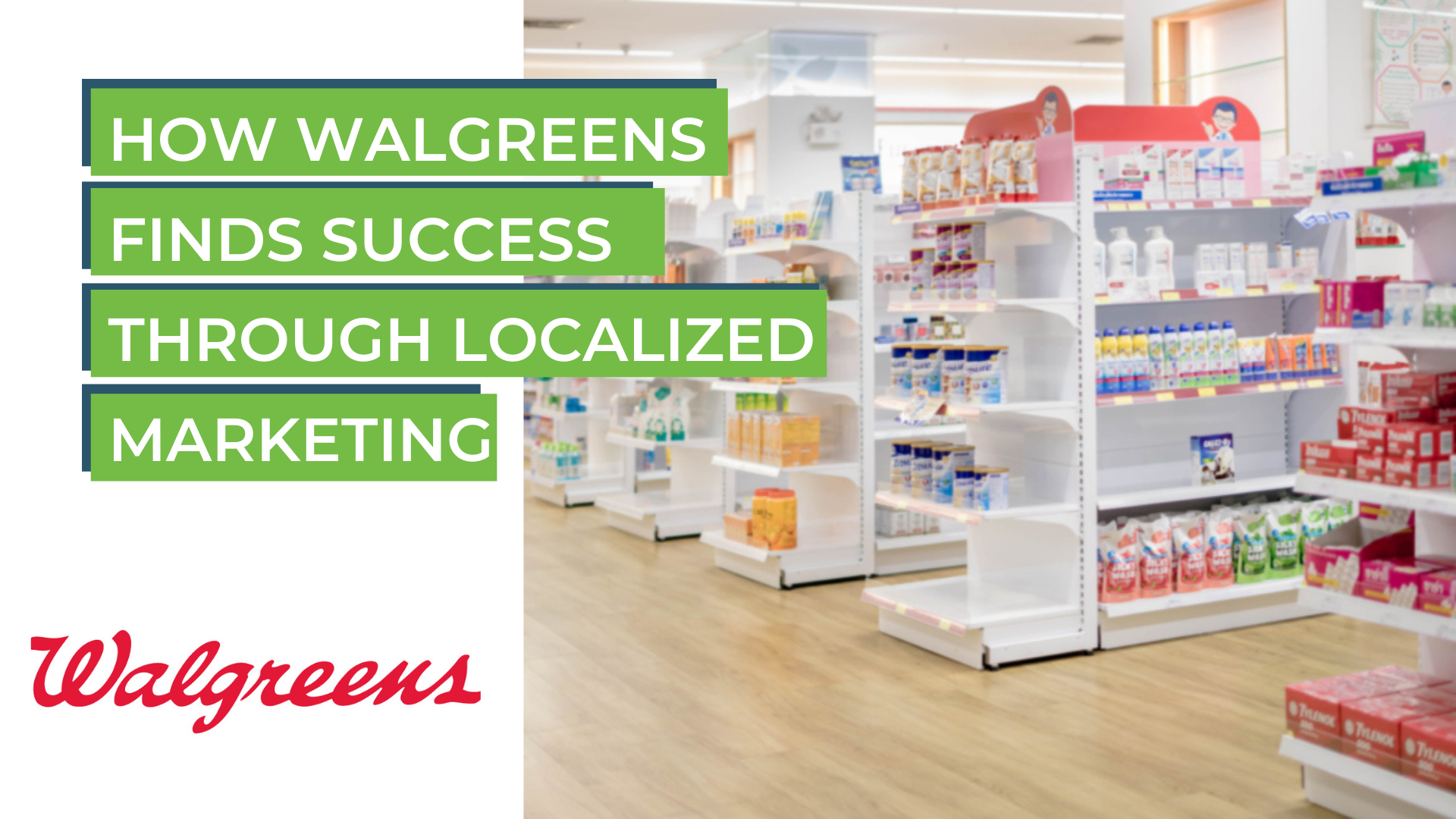How Walgreens Finds Success Through Localized Marketing

Walgreens is one of the most recognizable brands across the nation, with more than 9,000 locations. When it comes to localized marketing, Walgreens is doing something right. Rob Reed, SOCi’s Strategic Advisor – Enterprise Brands, sat down with Walgreens’ new CMO for a recent interview to get insight into what it has been like marketing for a massive brand during COVID-19. We’ll recap and resurface some of the conversations top marketers are having around the need and importance of localized marketing, the reasons for this digital-first mindset, and highlight top takeaways for you to implement into your localized marketing efforts.
Introducing Walgreens’ CMO and Senior Vice President
At the end of last year, Pat McLean joined Walgreens as their CMO and Senior Vice President with a clear 2020 marketing plan in place, but all of this changed as COVID-19 disrupted life as we know it. The global pandemic has defined the majority of his tenure.
As Walgreens new CMO, Pat McLean had to make significant changes to the previously planned localized marketing efforts to adjust to the changes that came along with the pandemic.
Changes Walgreens Made Amid COVID-19 Restrictions
As an essential business, Walgreens didn’t have much downtime to rethink their marketing tactics amid the pandemic. Walgreens remained open across the country and quickly developed a plan that would meet CDC guidelines and work at scale to keep both employees and customers safe. From a business perspective, Walgreens was not equipped to handle the digital shift that virtually happened overnight. Walgreens didn’t have pre-existing operations like curbside pick-up, and the company experienced supply chain issues in e-commerce after double-digit growth in the early stages of the pandemic.
Marketing campaigns and tactics had to be shifted, as well. One of the biggest campaigns Walgreens has slated for 2020 was Olympic-related. As we all know now, the Olympics ended up getting postponed, so Walgreens had to quickly rethink, realign, and scrap that entire campaign. In the past, Walgreens has also relied on traditional advertising through printed circulars in newspapers. By early June, Walgreens decided to suspend the printed flyers and move towards a more digital approach – which matched consumer behavior during this time.
McLean now realizes that Walgreens was not prepared for the fast digital shift that COVID-19 brought, and wants to be more prepared and invested digitally in case something similar happens in the future. McLean also mentioned that even as the pandemic subsides, consumers will likely keep their focus on digital, so Walgreens needs to continue improving its digital services in terms of their app, online features, and localized marketing in general.
What Walgreens Has Done to Be Successful So Far
In terms of localization, Walgreens has a pretty active presence in their local communities. In the interview, McLean explains that although Walgreens has such a large retail footprint, many people think of Walgreens as a local brand. Walgreens has locations everywhere from New York City to North Dakota, which creates very different situations in terms of impact on customers and the impact on operations. This forced Walgreens to focus on localization by looking at transaction data, customer insights, and keeping tabs on what was happening community to community. In turn, their marketing efforts are responsive to each of the unique situations that occur. For instance, if there is a hurricane in a specific region, Walgreens needs to be prepared to respond appropriately in that area.
To do so, Walgreens has local representatives that corporate communicates within a feedback loop when it comes to various marketing efforts. There is direct communication that goes to the store every day, and if there are specific newsworthy stories or events that occur, they are included in those communications. From a branding standpoint, there is also a system in place to change signage and promotional tags to be locally relevant. There’s also a very refined process for any other marketing-related activities that need to happen at the store since it happens at a pretty significant scale with 9,000 locations.
One of the biggest takeaways from the interview with Pat Mclean was the need for systems and processes when it comes to localization and branding. If your multi-location business doesn’t have an open communication line between corporate and local businesses, there will be increased confusion and miscommunications. Streamlined processes are a must in order to increase efficiency and ensure that specific marketing tactics don’t fall through the cracks.

Start Improving Your Business’s Localized Marketing Efforts
Have you seen similar struggles and triumphs for your multi-location business during COVID-19 and in your localized marketing efforts overall? Although on a massive scale, Walgreens has a very relatable story when it comes to localized marketing. As a final piece of advice, Mclean encouraged junior marketers to find ways to experience as much of the full 360 of marketing as possible. If you learn the various sides of localized marketing, you will better understand what makes an excellent localized marketing strategy, and you’ll learn the tools needed to execute it effectively. For more information, and for the full interview with Pat McLean, CMO and Senior Vice President for Walgreens, check out the Clicks 2 Bricks podcast. It’s a must-listen for multi-location marketers.
If this brand’s story has inspired you to work on improving your multi-location business’ localized marketing efforts, SOCi is here to help! SOCi is the central command for multi-location marketers and the all-in-one platform for your multi-location marketing needs. SOCi’s automated smart rules, notifications, and approval workflows make it easy for corporate and local teams to collaborate on every aspect of their localized marketing efforts. For more information on how SOCi can help improve your localized marketing strategy, request a demo today!





